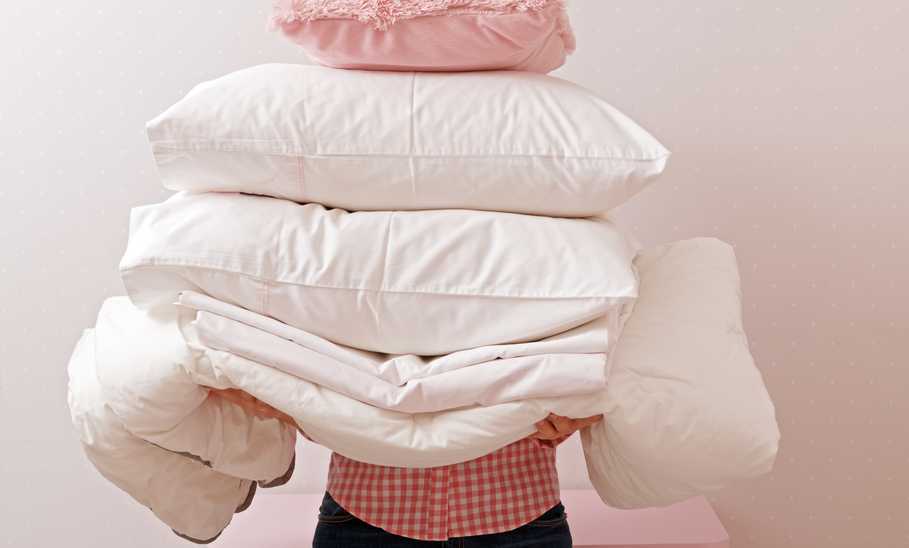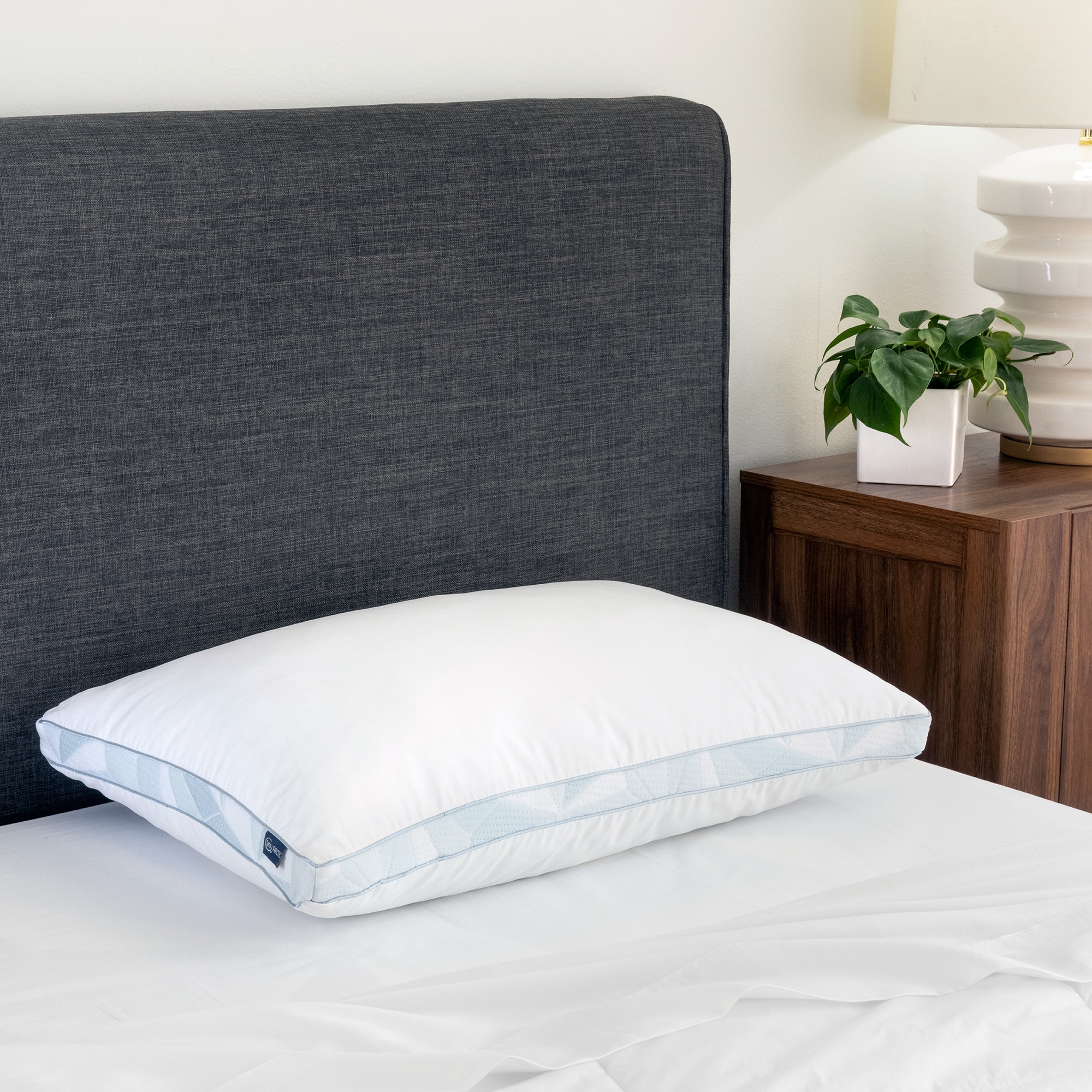How to Wash Pillows: A Brief Guide for Every Pillow Type

Our evaluations and opinions are not influenced by our advertising relationships, but we may earn a commission from our partners’ links. This content is created by TIME Stamped, under TIME’s direction and produced in accordance with TIME’s editorial guidelines and overseen by TIME’s editorial staff. Learn more about it.
Washing pillows may not be top of mind when it comes to cleaning, but the bedding experts encourage us to make it part of our regular cleaning routine. Pillows are magnets for body oils and fluids, getting dirtier and dirtier over time. It’s important to wash your pillows every couple of months, even if they are covered with pillow protectors.
We’ve also learned it’s important to check the label of your pillow before simply tossing it into your washing machine. Why? Because some pillows, like latex and memory foam, must be hand washed, while others, like feather and down alternatives, can safely go into a washing machine. Here are a few simple steps for cleaning machine-washable pillows like down and feather, or those made with down alternatives and synthetic fibers.
The Better Sleep Council recommends washing your pillows at least every couple of months, but the frequency also depends on the pillow. For example, feather or down pillows should be cleaned every three to six months, while memory pillows need spot-cleaning or a hand wash every two months. If you’re unsure, always follow the specific care instructions on your particular pillow.
You can clean your pillow coverings, including pillowcases, every week or every two weeks, depending on the presence of dirt or smells.
Whether you have a top-load machine or front-loader washer, the type of washing machine you use doesn’t matter as much as the wash cycle. Pillows should be washed on the gentle cycle and run through a second rinse cycle due to the bulkhead of the product for the ultimate clean.
Some pillows, like memory foam, cannot be washed or dried in a machine. If this is the case with your pillows, you can still get them clean.
Remove the protective covering.
Sprinkle baking soda over the pillow and let it sit for 30 minutes or longer. (Some people like to put the pillow outdoors in a dry, sunny spot during this process.)
After 30 minutes, remove the baking soda. Use a hand-held vacuum cleaner over the pillow to remove any dirt, pet dander, or remaining shreds of baking soda.
Note: If you have a spill or spot a stain, clean it using a damp cloth and gentle laundry or dish detergent cleanser.

Synthetic pillows are pillows made with a polyester fill or fiberfill, or any other man-made material and these are machine-washable. Follow these steps for a proper clean:
Remove pillow protectors and coverings. Set aside to be washed with sheets.
Put pillows in a washing machine on a gentle cycle using mild detergent. It is advised to run pillows through a second rinse cycle since they can hold a lot of soap and water.
Gently squeeze excess water out of pillows when you remove them from the washer between two towels.Dry on the lowest heat setting or air dry outside.
Tip: Use dryer balls or tennis balls wrapped in socks to protect your pillows from getting lumpy. When other objects like balls or even towels are added to the dryer with pillows or duvets with fill, it should prevent clumping of the material.
Related Read: Best Cooling Pillows to Keep You Refreshed While You Snooze
Remove protective pillow coverings and set aside. These pillow covers can be washed along with your sheets and pillowcases. Double-check the care label to ensure it can be washed in a machine.
Set your washing machine to its gentlest cycle and use a mild detergent. Running them through a second rinse cycle is good for pillows because they are bulky and less likely to shed all the soap in one rise.
Remove from the washing machine and squeeze out the excess moisture by pressing between two towels.
You can air dry your pillows if it is a sunny day by hanging them on a clothesline or setting them down on a clean towel on a deck or patio. Otherwise, if the label says the pillow can go into a dryer, you can put the pillows into the dryer and use the lowest setting to dry them.
Note: If your pillow is filled with feathers, it is best to dry them on a no-heat setting.
Tip: Use dryer balls or tennis balls wrapped in socks to protect your pillows from getting lumpy. When other objects like balls or even towels are added to the dryer with pillows or duvets with fill, it should prevent clumping of the material.

Related article: Best Pillows for Neck Pain and a Better Night’s Sleep, According to Experts
Microbead pillows are filled with multiple beads and typically covered in a synthetic material. The good news is, they’re still machine-washable, as long as you follow these steps:
Remove the protective cover and pillowcase.
Set your washing machine to a gentle cycle and use mild laundry detergent.
Send the pillows through a second rinse to ensure all the detergent is thoroughly washed away.
Dry pillows on low heat and remove them when damp to keep the material from overheating. You can set the pillow outside in a dry, warm spot or hang it on a clothesline to complete the drying process.
If the care directions on your pillow allow it, you can put your pillows on low or no heat cycles in a dryer. You can also choose to air dry your pillows on a clothesline.
If you choose to air dry your pillows, you can speed up the drying process by putting it near a fan or wherever you have good air circulation in your home. Whatever method you choose, it’s important to fully dry your pillows, so you’re not adding a protective cover or pillowcase to a damp pillow and back on your mattress.
How you dry your pillows depends on the type of materials. All pillows can be dried outside on a clothesline or a towel or blanket in a sunny spot. Feather, down, most synthetic fibers, gel and microbead pillows can usually go on a low-heat cycle in the dryer. Memory foam and latex pillows cannot be put in the dryer and must air dry.
The Better Sleep Council recommends replacing your pillow every 2.8 years based on its research, but how well you care for your pillows will influence its lifespan.

Pillows are a hardworking piece of bedding and even with a protective cover, they do get dirty over time. Some pillows are machine washable, like feather and down, and some, like memory foam and latex, are not compatible with the washer
Always check the care label before you wash them and clean your pillows every couple of months, depending on the type of pillow. By doing so, you may extend the life of your favorite nightly headrest and enjoy a sweeter slumber.
Read More: Best Places to Buy Pillows: 9 Online Stores for Any Budget
The information presented here is created by TIME Stamped and overseen by TIME editorial staff. To learn more, see our About Us page.



